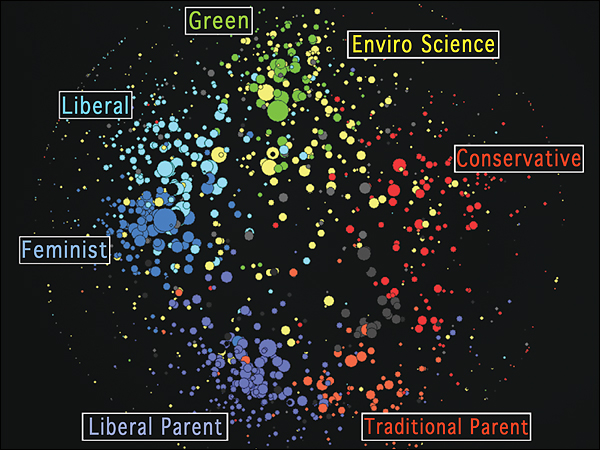Visualization Methods Good For Tracking Silly Videos and Middle East Politics
June 2nd, 2009 — Tim Hwang
Really fun news today that Internet and Democracy’s very own John Kelly recently appeared in the Washington Post, talking about his work in mapping the blogosphere and the research happening at the Berkman Center. The article talks about the story of Brandon Hardesty, who achieved internet fame through his short, goofy Youtube videos that have attracted a vast following online — and the larger vibrant cultural and community ecosystem of which it is a part. As they describe:
Every time Brandon logged on to YouTube, which he did three or four times daily, viewership for his video had skyrocketed: thousands, then ten thousands, then millions. Brandon’s notoriety was spreading geometrically — like the spread of a cold after a single child sneezes in a classroom infecting 10 children, who each go on to infect 10 others with the virus, who all fan out across their communities to create a spiraling infection. Brandon’s video spread until, before long, more than 4.7 million people had watched Brandon all alone in his parents’ basement being silly.
Interestingly, the method that John describes is the same method that we’ve used here at the Internet and Democracy project to build visuals about the shape of discourse networks in the Iranian blogosphere. You can read more about it here.






 Click Here
Click Here
June 4th, 2009 at 11:26 am
[…] via Internet & Democracy Blog » Visualization Methods Good For Tracking Silly Videos and Middle Eas…. […]
June 9th, 2009 at 3:36 pm
Very interesting. I just posted on the same Washington Post article, on what I think is behind the phenomenon.